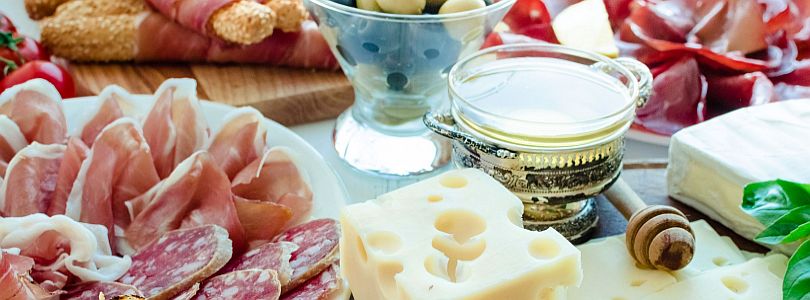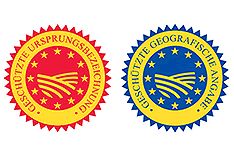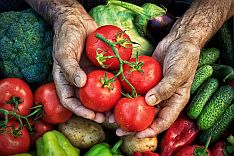Content
New grounds for refusal

Protected geographical indications and protected designations of origin included as grounds for refusal in the Trade Mark Act
Geographical indications and designations of origin for foodstuffs, wine and spirits, which are protected under national or European legislation or international agreements, were included in the Trade Mark Act as absolute grounds for refusal in January 2019. In addition, protected traditional terms for wine and traditional specialities guaranteed in the food sector must also be taken into account as absolute grounds for refusal.
Trade marks containing such terms – whether identical or merely by way of an evocation – may be registered only for such goods which comply with the relevant specification of the protected indication or designation.
Variety denominations which enjoy protection in Germany or the European Union under national, European or international legislation may also conflict with the registration of a trade mark.
In January 2019, these grounds for refusal were expressly included in numbers 9 to 12 of section 8 (2) of the Trade Mark Act.
Exclusion from registration of protected geographical indications and protected designations of origin, traditional terms for wine and traditional specialities
The exclusion from registration, to which the Trade Mark Act now expressly refers, results from national and European legislation and international agreements. European provisions are particularly relevant in practice, namely:
- as regards protected designations of origin (PDO) and protected geographical indications (PGI) (section 8 (2) no. 9):
- foodstuffs and agricultural products: Art. 31 (1) (26) Regulation (EU) 2024/1143
- grapevine products: Art. 102, 103 (2) Regulation (EU) No. 1308/2013 in conjunction with Art. 31 (1) (26) Regulation (EU) 2024/1143
- aromatised wine products: Art. 31 (1) (26) Regulation (EU) 2024/1143
- spirit drinks: Art. 31 (1) (26) Regulation (EU) 2024/1143
- as regards traditional terms for wine section 8 (2) no. 10: Art. 113 (2) Regulation (EU) No. 1308/2013 in conjunction with Art. 32 (1) Regulation (EU) No. 2019/33
- as regards traditional specialities guaranteed (TSG): Art. 68 (1) Regulation (EU) 2024/1143

The purpose of the reference to this exclusion from registration is to ensure, in the case of foodstuffs, agricultural products, grapevine products and spirit drinks, that the protected names are used in accordance with their specifications. This may often be ensured – even when the protected indication or designation is used in a trade mark – by restricting the list of goods and services to those goods which comply with the applicable specification of the protected indication or designation.
Where can you find the protected geographical indications and protected designations of origin, traditional terms for wine and traditional specialities that may conflict with a trade mark registration?
The database of the European Commission ![]() eAmbrosia now contains all protected indications for wine, foodstuffs and spirit drinks and merges the previous databases "E-Baccus", "Door" and "E-Spirit-Drinks". With the exception of the protected traditional terms for wine, all protected indications are also searchable in the EUIPO's
eAmbrosia now contains all protected indications for wine, foodstuffs and spirit drinks and merges the previous databases "E-Baccus", "Door" and "E-Spirit-Drinks". With the exception of the protected traditional terms for wine, all protected indications are also searchable in the EUIPO's ![]() GIview database.
GIview database.
When does a protected geographical indication or protected designation of origin conflict with the registration of a trade mark?
- The protected designation of origin (PDO) or protected geographical indication (PGI) must have an earlier priority than the trade mark applied for.
- The products protected by the designation of origin or geographical indication must be identical or comparable to the goods covered by the trade mark application. Whether the products are comparable in this sense may depend on the respective production methods, raw materials, external appearance, or even consumption habits, distribution or similar marketing arrangements.
- It must be a direct use/appropriation/imitation or evocation of the protected indication or designation in the trade mark representation. A condition for an evocation is that a direct mental link is created between the product bearing the mark and the protected designation or indication.
Plant variety protection

Plant varieties which are protected in Germany, the EU or by international agreements are also excluded from registration as trade marks (section 8 (2) no. 12 of the Trade Mark Act). The purpose of this ground for refusal is to ensure that anybody can freely use protected variety denominations. This would be counteracted by a monopoly resulting from trade mark protection.
Where can you find protected plant varieties that may conflict with a trade mark registration?
Plant variety protection is searchable in the databases:
- CPVO (Community Plant Variety Office)
 Variety Finder
Variety Finder - UPOV (International Union for the Protection of New Varieties of Plants)
 GENIE
GENIE - via publications of the
 Bundessortenamt (Federal Plant Variety Office)
Bundessortenamt (Federal Plant Variety Office)
When does a variety denomination conflict with the registration of a trade mark?
Trade mark applications for live plants, seeds, fresh fruits and vegetables (class 31) must be refused if the mark consists of a registered variety denomination. This also includes expired or abandoned variety denominations. The variety denomination conflicts with the registration of a trade mark under the following conditions:
- the trade mark consists exclusively of the variety denomination or contains the variety denomination in its essential elements
- the claimed goods concern a plant variety of the same or a closely related species
Example: "Antonio" is a registered variety denomination for sweet peppers. Therefore, the trade mark "Antonio" should not be registered for sweet peppers.
Initial experience and findings
The incorporation of the exclusion from registration of protected geographical indications and protected designations of origin in the catalogue of grounds for refusal of trade mark applications in section 8 (2) of the Trade Mark Act clearly illustrates the increasing importance which these traditional designations have acquired in recent years. For agricultural products and foodstuffs alone, roughly 1,500 indications and designations have been registered across Europe; for wine, aromatised wines and spirit drinks about 1,900.
At the DPMA, responsibility of trade mark examiners depends on the class of goods or services which is mainly claimed by the application. This arrangement has proved particularly useful in view of the new grounds for refusal: The examiners particularly involved with food and drink classes have continued to intensify their searches in the relevant databases for protected geographical indications and protected designations of origin. In this context, it must be borne in mind that respective exclusion from registration does not only cover incorporation of the identical designations into the trade mark but also mere allusions and evocations. If trade mark applications contain protected designations in an identical or analogous form, the lists of goods and services must be adapted to the specifications of the protected geographical indications and protected designations of origin.
Conflicts with variety denominations are rather rare, because the exclusion from registration only applies if the variety denomination as such is the essential element of the trade mark – the basic principle applies that a plant variety cannot be a trade mark.
The expectation that there would be more remarks from third parties regarding protected geographical indications, protected designations of origin or protected variety denominations that need to be taken into account has not yet been fulfilled: In any case, hardly any use has so far been made of the option to make such a remark as a non-party to the proceedings (observations by third parties, section 37 (6) of the Trade Mark Act), which has been available since 14 January 2019.
New grounds for refusal – tips
Conduct searches before you file the application!
- particularly for applications in the relevant classes 29, 30, 31, 32 and 33 (food, beverages, live plants)
- but also for applications in other classes, such as class 8 "Knives and implements for cutting" (e.g. the name "Solingen" is protected by the Solingen Verordnung [Solingen Ordinance]), "wool" in class 22 ("Native Shetland Wool" is a PDO) or "Time instruments" in class (the name "Glashütte" is protected by the
 GlashütteV [Glashütte Ordinance]).
GlashütteV [Glashütte Ordinance]). - as regards the text of the trade mark, searches should also be performed for possible approximations to/modifications of PDOs/PGIs since the prohibitory provisions of the relevant regulations in conjunction with section 8 (2) nos. 9 and 11 of the Trade Mark Act also cover imitations and evocations
Indicate specific goods and services
If possible, try to avoid generic terms relating to goods which for factual reasons alone cannot correspond to the protected product. In this case the trade mark could be deceptive within the meaning of section 8 (2) no. 4 of the Trade Mark Act.
Example: The trade mark application for "XY Brandy de Jerez" should not be filed with respect to the goods "spirits", as this would also include, for example, whiskey. However, by its very nature, whiskey will not be able to comply with the specification for the protected geographical indication (PGI) “Brandy de Jerez” (PGI-ES-01944). In this case, the list of goods should read: "Spirits, namely brandy in so far as it complies with the applicable specification for the protected geographical indication ‘Brandy de Jerez’".
DPMA, Bild 3: iStock.com/valentinrussanov, Bild 3: iStock.com/valentinrussanov, Bild 3: iStock.com/valentinrussanov
Last updated: 10 December 2025

Not only protecting innovations
Social Media